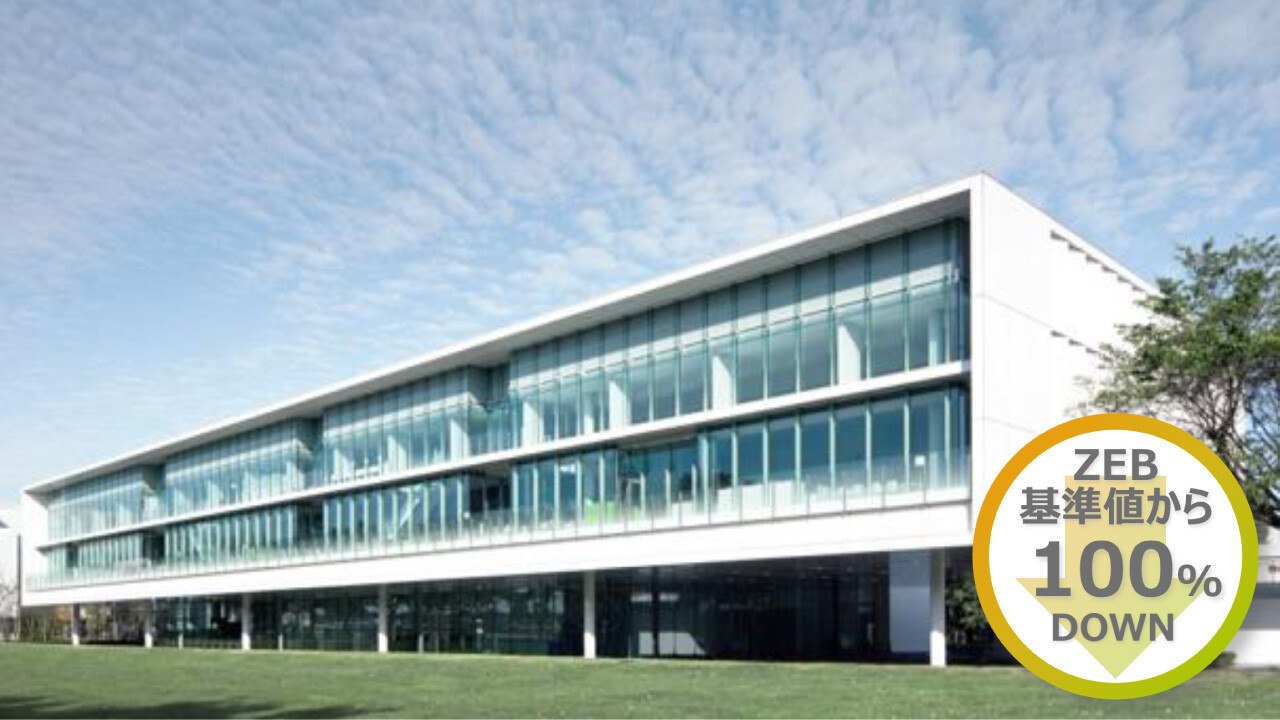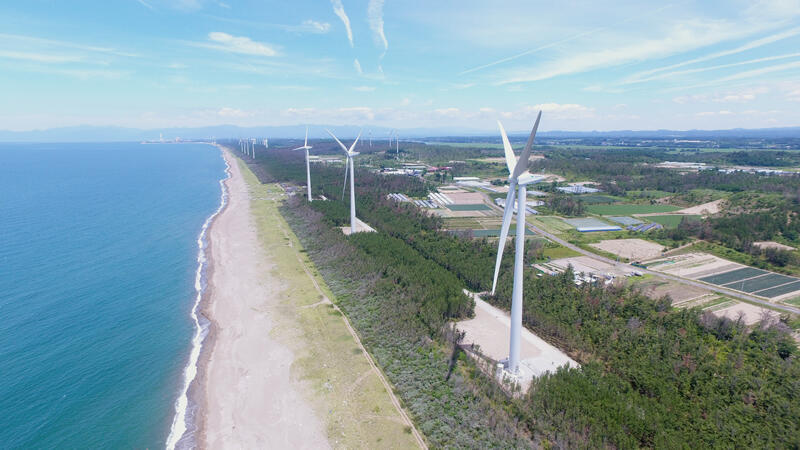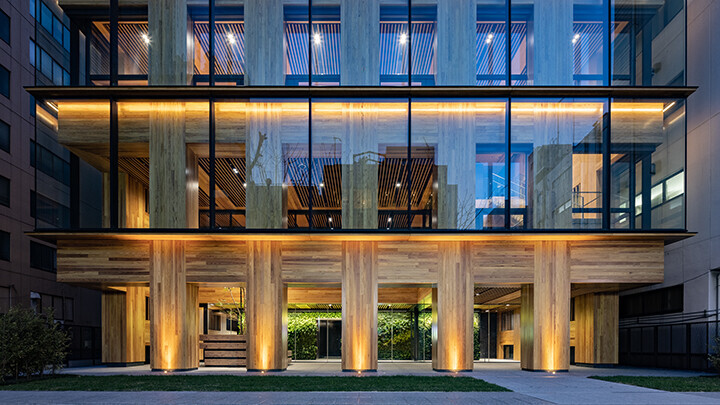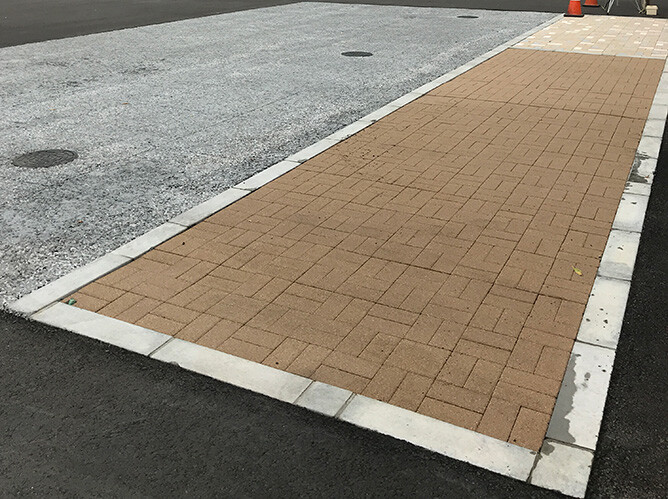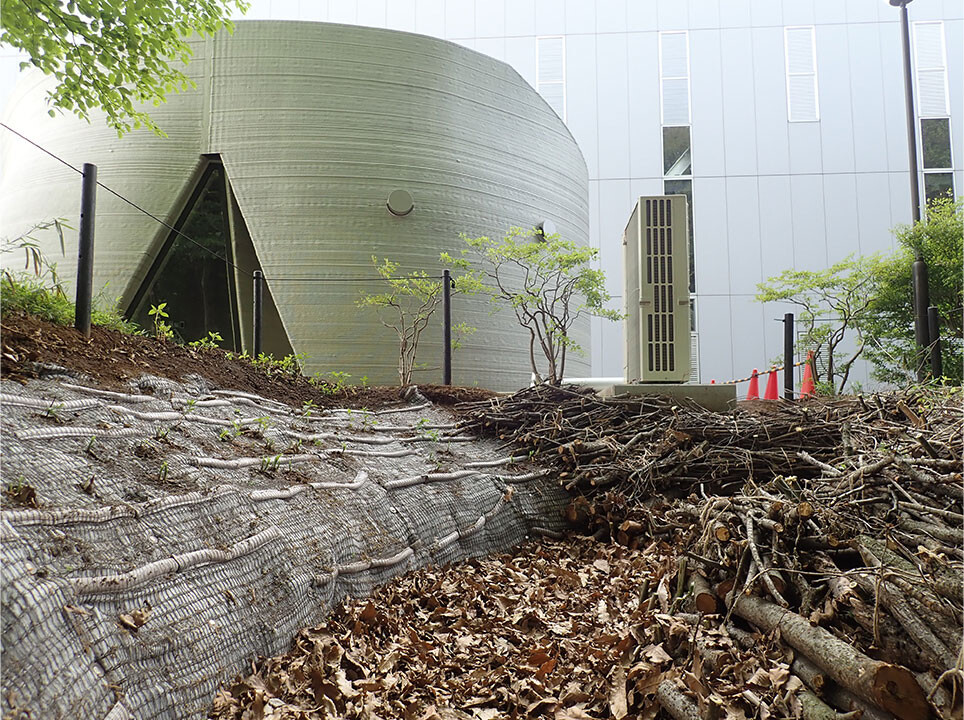Decarbonized Society
Creating a Decarbonized Society
The Obayashi Group has formulated the Environmental Policy and been implementing initiatives throughout the supply chain to realize a decarbonized, recycling-oriented society that has respect for the natural world. For the realization of a decarbonized society, we set targets for the reduction of greenhouse gas emissions and implement specific initiatives across our businesses, such as reducing the consumption of fuel and electricity and utilizing low-carbon materials through business activities.
Greenhouse Gas Emission Reduction Targets
The Environmental Policy sets out efforts to reduce environmental impact through the Group's entire business activities for the realization of a decarbonized society.

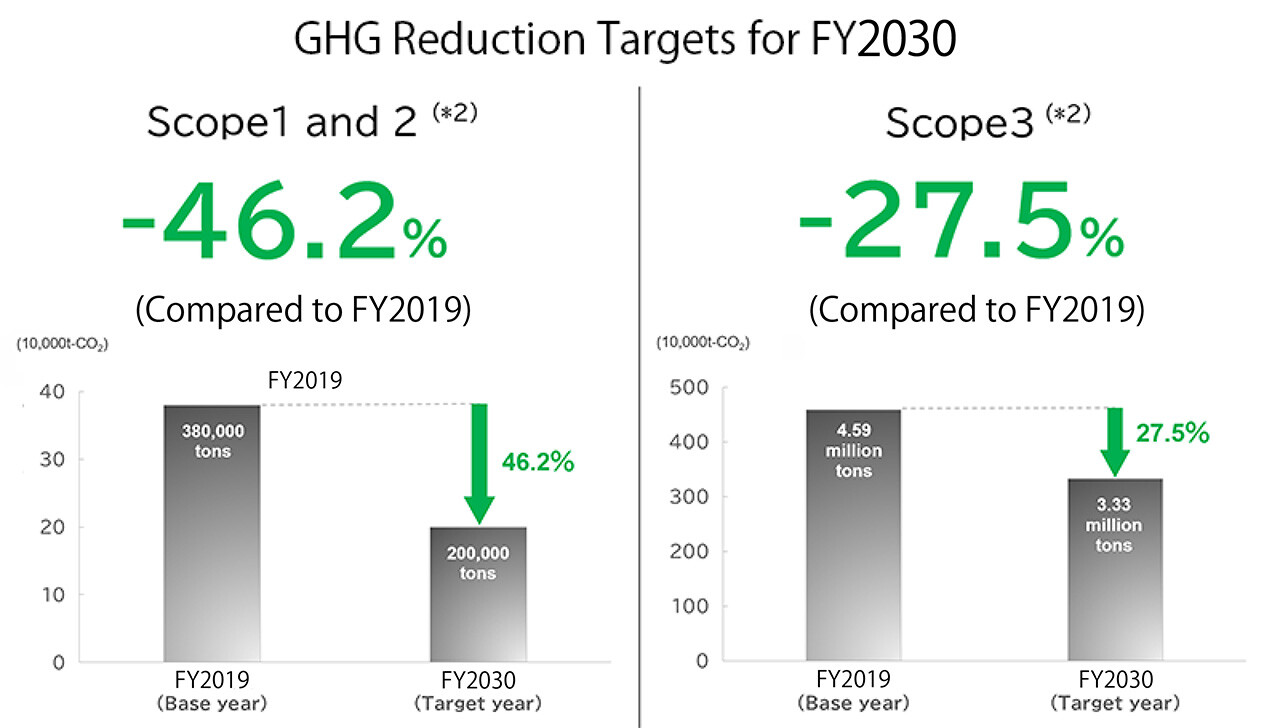
- *1 Science Based Targets (SBT)
These are greenhouse gas emission reduction targets set by companies for 5 to 15 years in the future that are consistent with the level sought by the Paris Agreement (aiming to keep the global rise in temperature to well-below 2℃ compared to before the Industrial Revolution, with aims to further constrain this warming to 1.5℃). - *2 Scope1: Direct greenhouse gas emissions by the business operator itself
Scope2: Indirect greenhouse gas emissions accompanying the use of electricity, heat and steam supplied by other companies
Scope3: Indirect greenhouse gas emissions other than Scope1 and 2 (emissions by other companies related to the activities of the businessoperator).The Group's target cover Category1 and 11
Analysis of Current Situation and Issues
Scope1, 2
- We proactively adopt diesel fuel alternatives and electric construction machinery, which are effective CO2 reduction measures at construction sites. However, due to issues including the limited supply area and volume in addition to cost, the reduction of Scope1 emissions has not progressed.
- On the other hand, the reduction of Scope2 emissions has made more progress than planned through the use of renewable energy and non-fossil certificates. In FY2024, for operations in Japan, including those of Group companies, zero Scope2 emission is expected to be achieved through the utilization non-fossil certificates and so on. The next challenge is the reduction of CO2 emissions in our overseas construction businesses.
Scope3
- While we are building a steady track record in environmentally friendly construction, including ZEB, as a result, at least 50% of design and build projects were ZEB in FY2024. On the other hand, the volume of orders received for design and build projects and the environmental performance of buildings cannot be fully controlled, hence emissions may increase in fiscal years with many project completions.
- We are proactively promoting the use of low-carbon materials in design and build projects in urban area.
Future Emissions Reduction Policy
We have developed a roadmap for execution of CO2 emission reduction measures to ensure steady execution of our decarbonization efforts. We are promoting CO2 emission reductions based on this roadmap and will revise the roadmap as necessary according to the execution status and social situation.
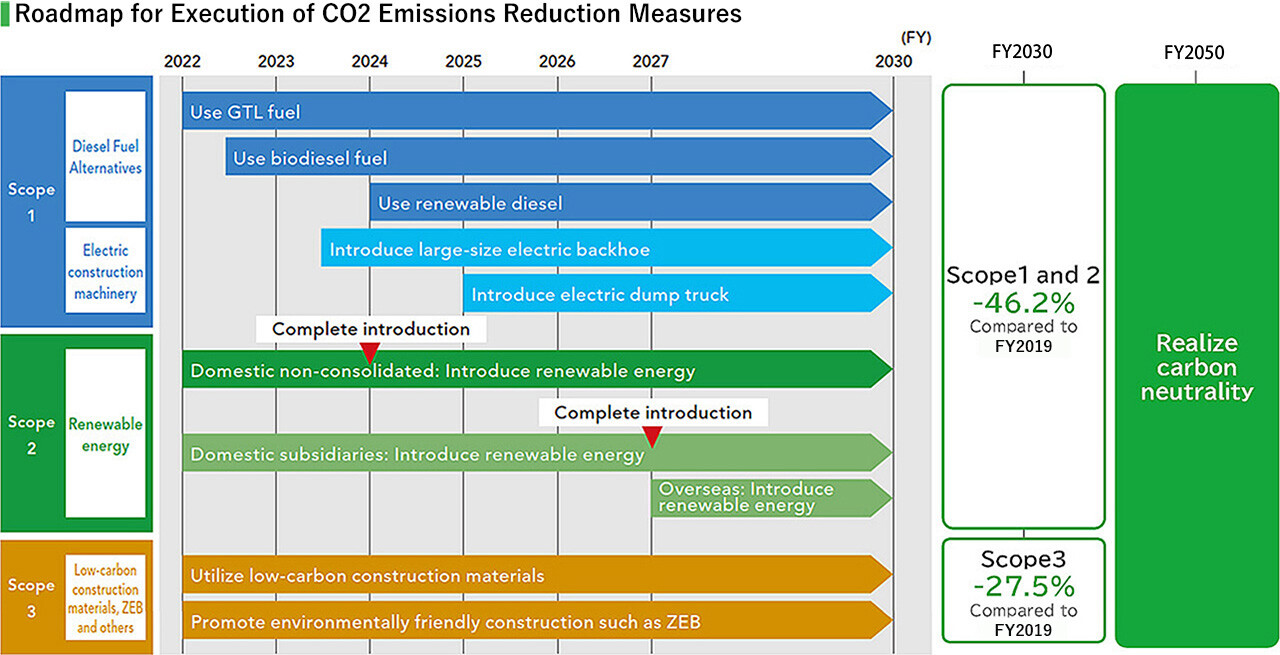
Progress in the Reduction of CO2 Emissions and Future Outlook
Scope1, 2
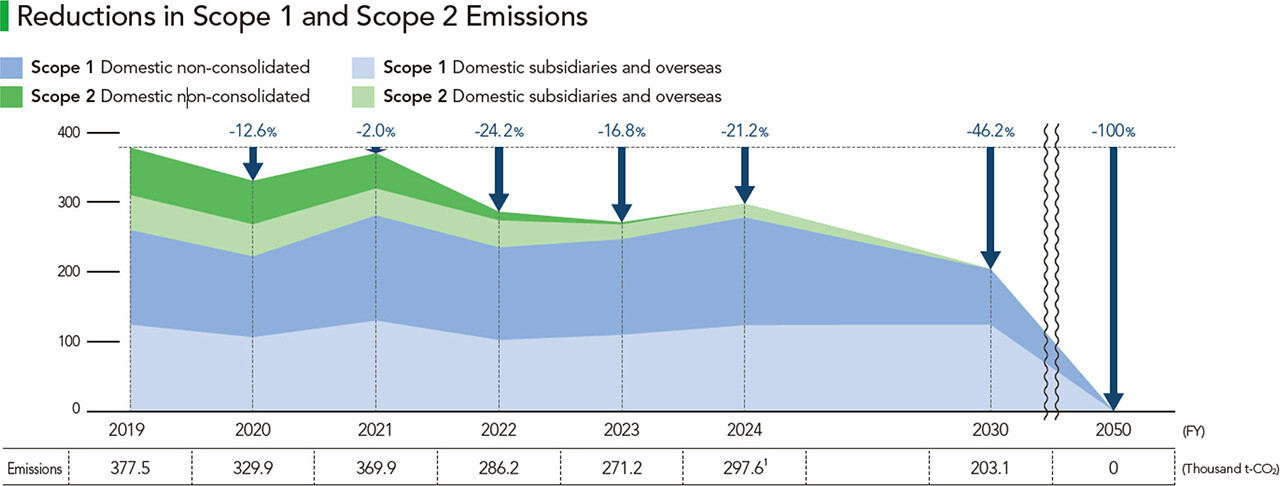
- We will first continue to work on reducing Scope2 emissions through FY2025, while aiming to expand the adoption of diesel fuel alternatives and establish operation methods for electric construction machinery for the reduction of Scope1 emissions. From FY2026 we will make the necessary investments and promote full-scale initiatives.
- Regarding the reduction of Scope1 emissions, we will maximize the use of diesel fuel alternatives such as GTL(*4) biodiesel, and renewable diesel(*5) while considering maintenance performance, cost, and supply volumes.
- The use of electric construction machinery presents issues from a cost and supply perspective. However, we intend to introduce electric construction machinery following demonstration experiments and other activities to verify the benefits. We will continue field tests toward the development of construction site power supply and charging systems for electric construction machinery in line with construction plans at construction sites and provide on-site operational manuals.
- For Scope2 reduction measures, we will continue the use of renewable energy and non-fossil certificates in our domestic business to continuously realize zero emissions. In our overseas businesses as well, we will sequentially promote initiatives including the utilization of renewable energy.
- *4 GTL
Gas to liquid fuels are diesel fuel alternatives produced from natural gas that are cleaner and cause less environmental impact in CO2 emissions can be achieved by replacing diesel fuel with GTL, while maintaining properties equivalent to those of petroleum products. - *5 renewable diesel
Next-generation biofuels that are produced using a hydro-refining process from raw materials such as waste cooking oil and vegetable oils that do not compete with food supply. Renewable diesel can reduce greenhouse gas emissions by 90% compared derived diesel on a lifecycle assessment basis and can be used as is in vehicles and heavy machinery that run on diesel.
Scope3
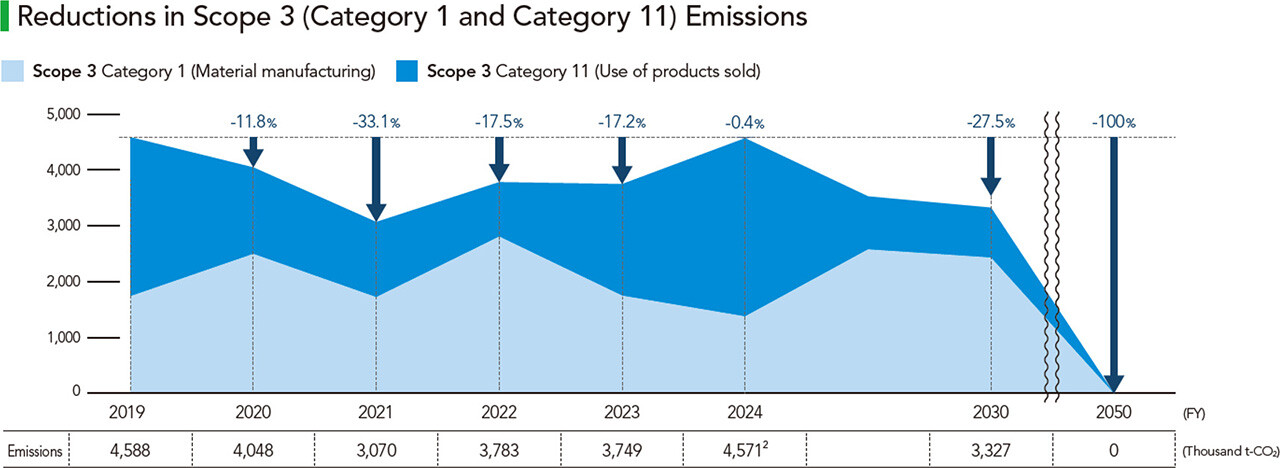
- We aim to use 50,000m³ of Clean-Crete™ and 100,000 t of electric furnace steel beams per year. We will expand the use of these low-carbon materials at construction sites through the introduction of internal carbon pricing. We will proactively promote the use of Clean-Crete. For example, we will in principle mandate the use of Clean-Crete at construction sites where Clean-Crete is usable including projects designed by other companies. In addition, we will continue to promote environmentally friendly construction such as ZEB with the aim of 100% ZEB for our design and build projects by FY2030.
Scope1 Reduction Measures
Introduce Diesel Oil Alternative Fuels
- Most of the CO2 emitted through our business activities is generated from the combustion of the diesel oil we use in construction machinery at construction sites. We will aim to reduce our CO2 emissions by utilizing diesel oil alternative fuels (GTL, biodiesell, renewable diesel, etc.) that can reduce our CO2 emissions.
We will also continue to work with a view to hydrogen fuel in the future.
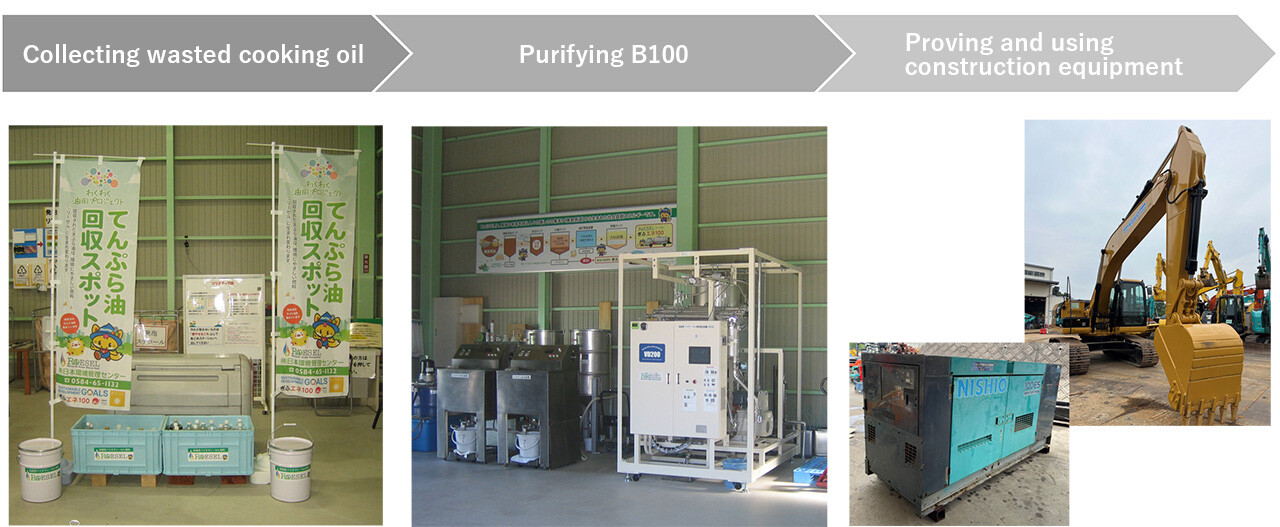
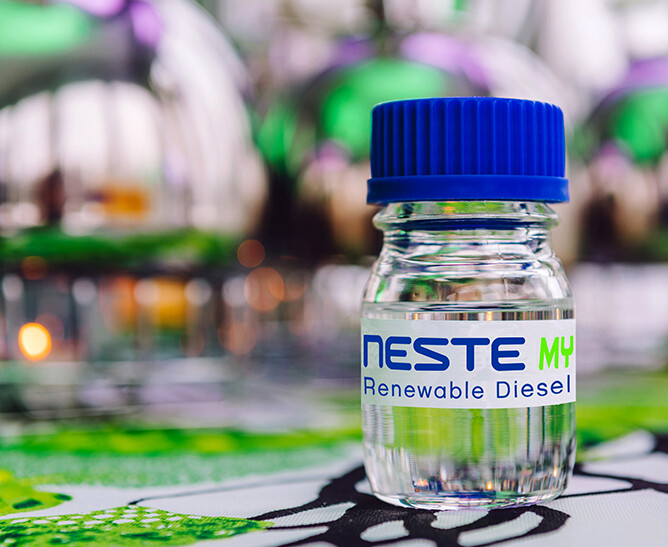
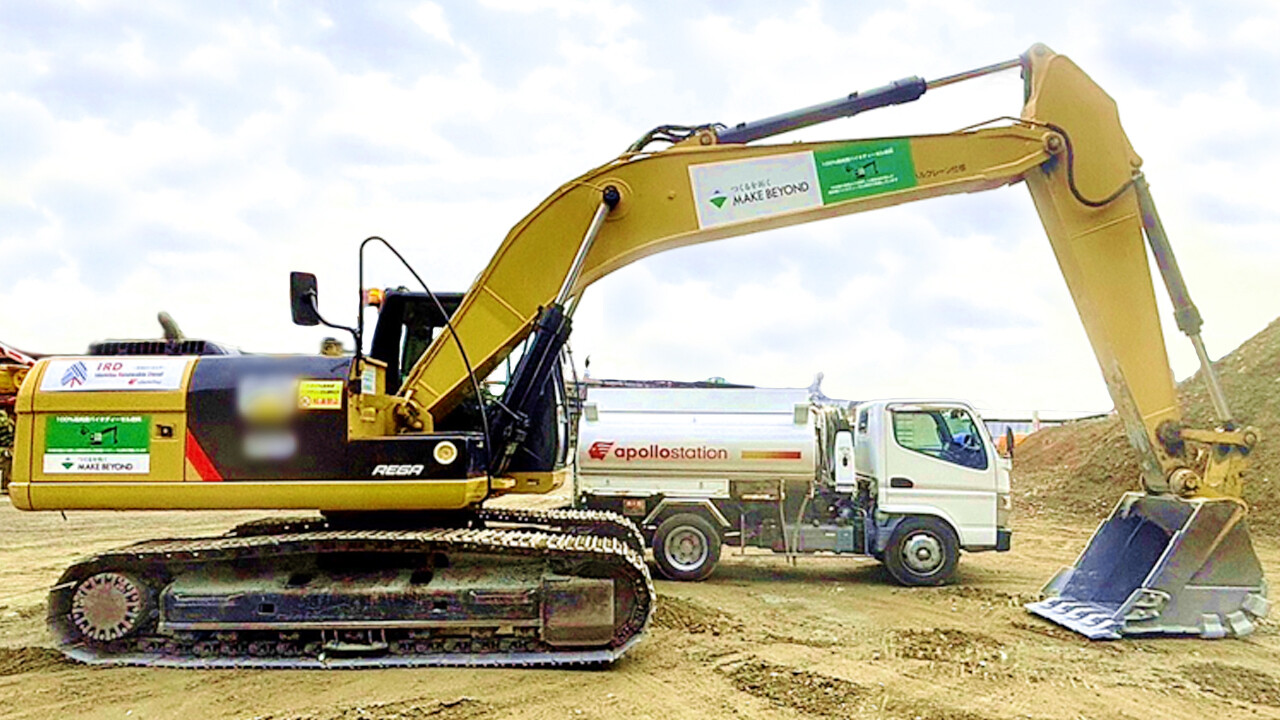
Introduce ICT Labor-saving Construction and Hybrid and Electric Construction Machinery (Scope1)
- We will expand the use of labor-saving construction methods utilizing ICT and promote the use of hybrid or electric construction machines such as large-size electric backhoe and electric dump truck, according with manufacturer's market launch plan to reduce the fuel consumption.
-
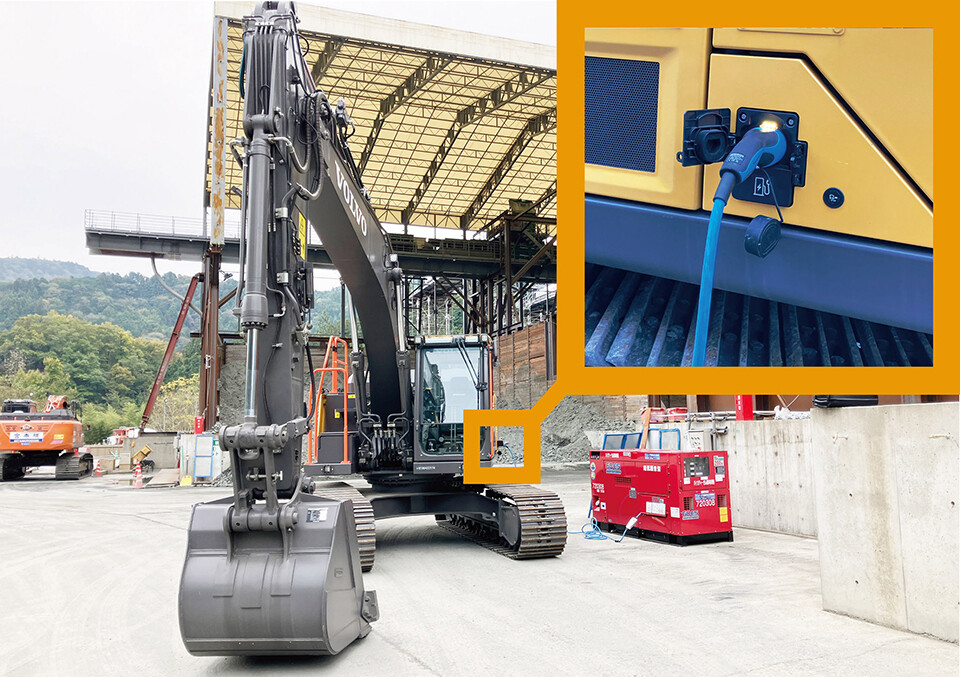
Charging by a generater for B100
-
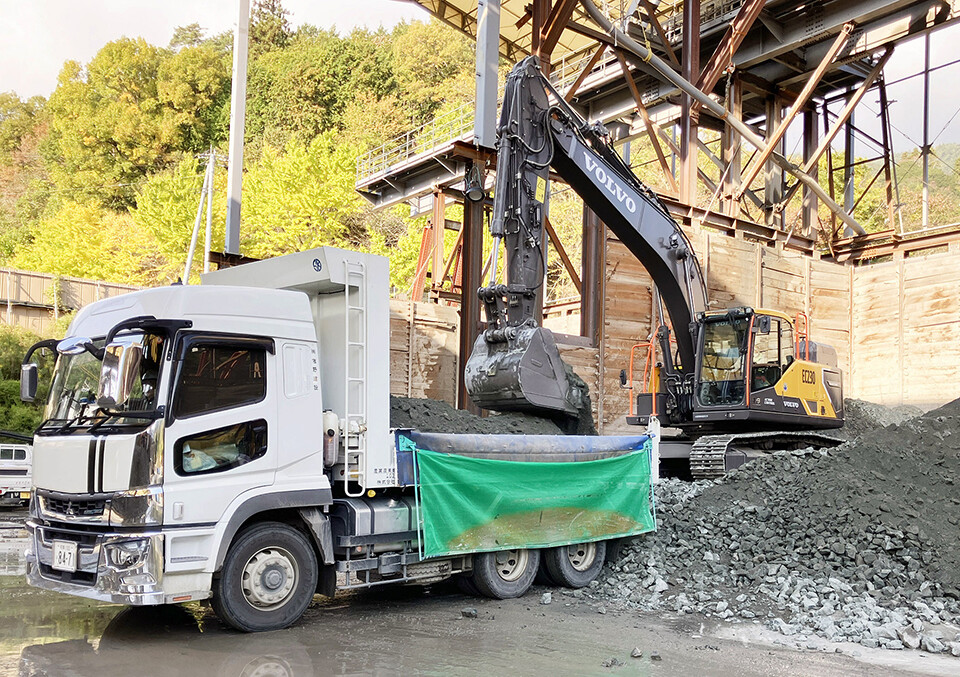
Battery-powered hydraulic excavator
Scope2 Reduction Measures
Convert to Renewable Energy (Scope2)
- We will also sequentially switch to renewable energy for electricity used at our construction sites, office buildings and real estate properties for lease, aiming at Scope2 decarbonization of the Group by 2030.
Targets and Results for renewable energy electricity usage ratio
| Results | Targets | ||
|---|---|---|---|
| FY2023 | FY2024 | FY2030 | |
| Non-consolidated | 100% | 100%(*7) | 100% |
| Domestic subsidiaries | |||
| Overseas | |||
- *7 FY2024 data is pre-third party verification results
Scope3 Reduction Measures (Category1 Purchased goods/services)
Utilize Low-carbon Materials (Promote wooden structures and interiors and Other Initiatives) (Scope3)
- We are developing and practically using low-carbon materials in collaboration with our supply chains. Clean-Crete, our low carbon concrete released in 2010, can reduce CO2 emissions by up to 80%. The cumulative amount of the material used has reached 420,000m³ as of end of FY2023. We also developed other low carbon materials such as Clean-Crete N™ and Clean-Crete Geo™ that utilizes industrial byproducts to achieve carbon negative, and LigninCrete™ that contains wood biomass to fix CO2 over a long period of time. Looking ahead, we intend to further expand the use of such materials at our construction sites and continue to advance technological development and application.
In addition, we will reduce CO2 emissions associated with materials manufacturing and construction by promoting the wooden structures and interiors for large buildings, electric furnace iron frames, and use of reused materials.
| Targets | |
|---|---|
| Clean-Crete | 50,000m³/year |
| Electric furnace steel | 100,000t/year |

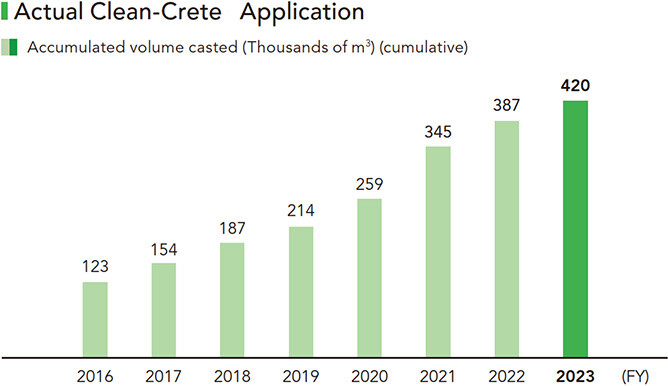
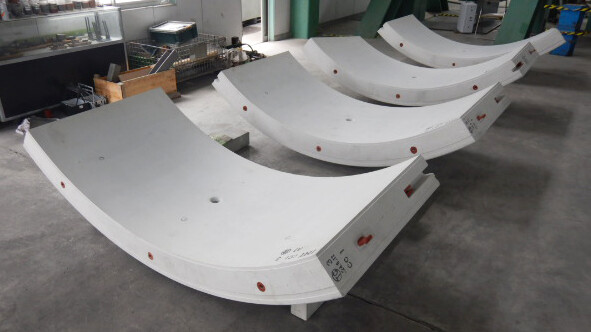
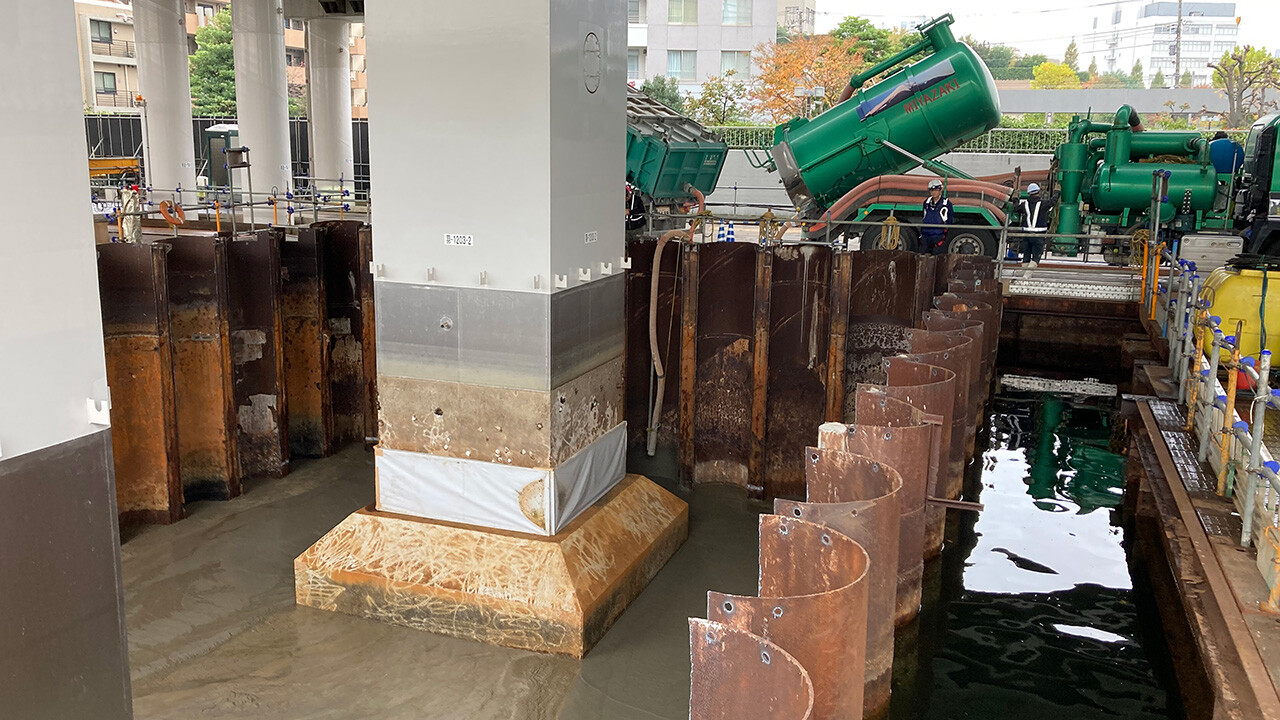
Open Lab 3 (formerly the Electromagnetic Engineering Laboratory) reduces CO2 emissions by reusing structural components
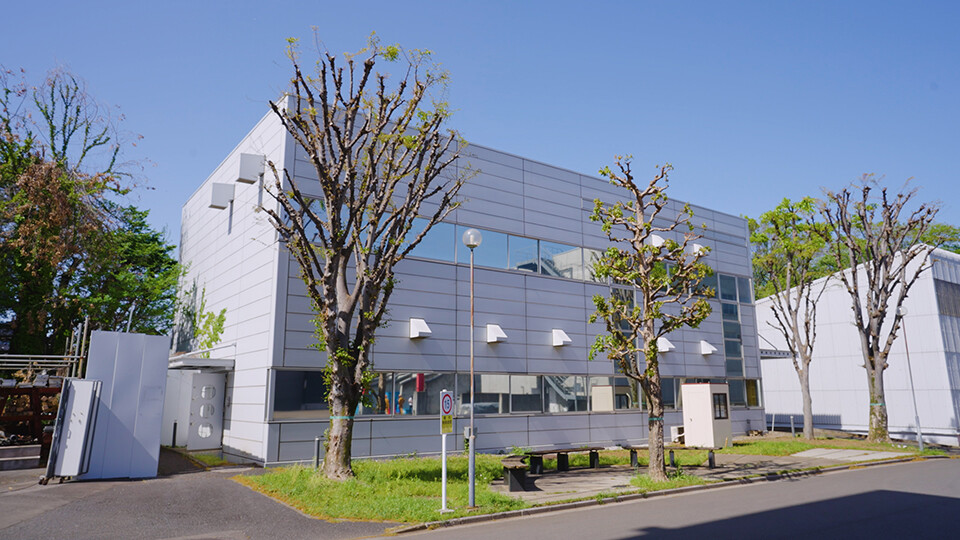
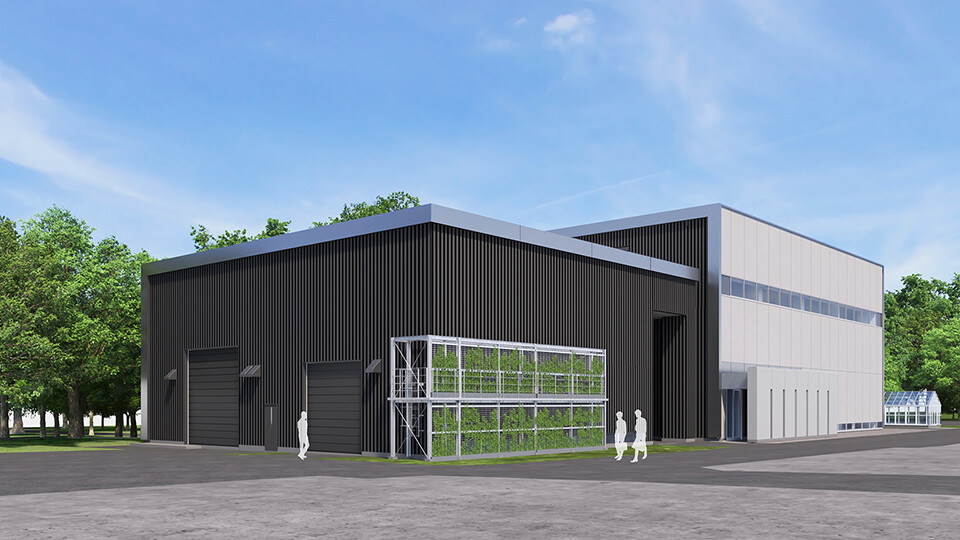
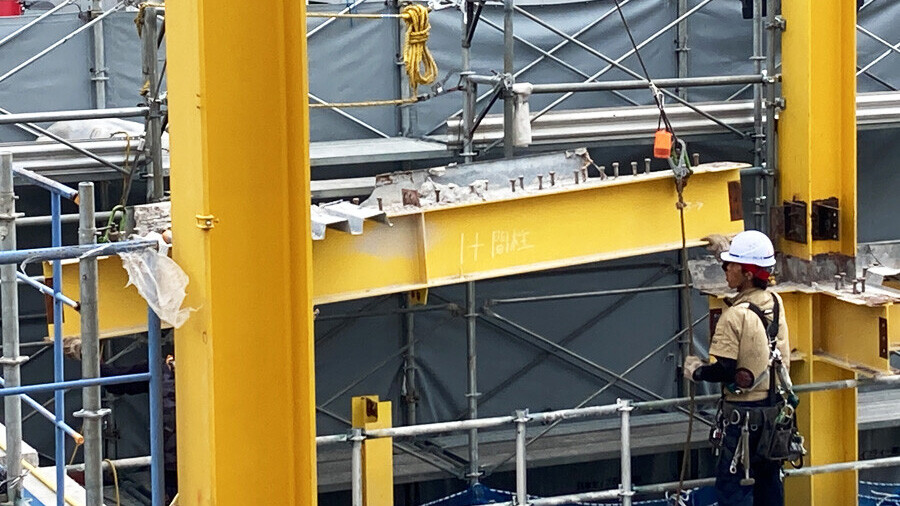
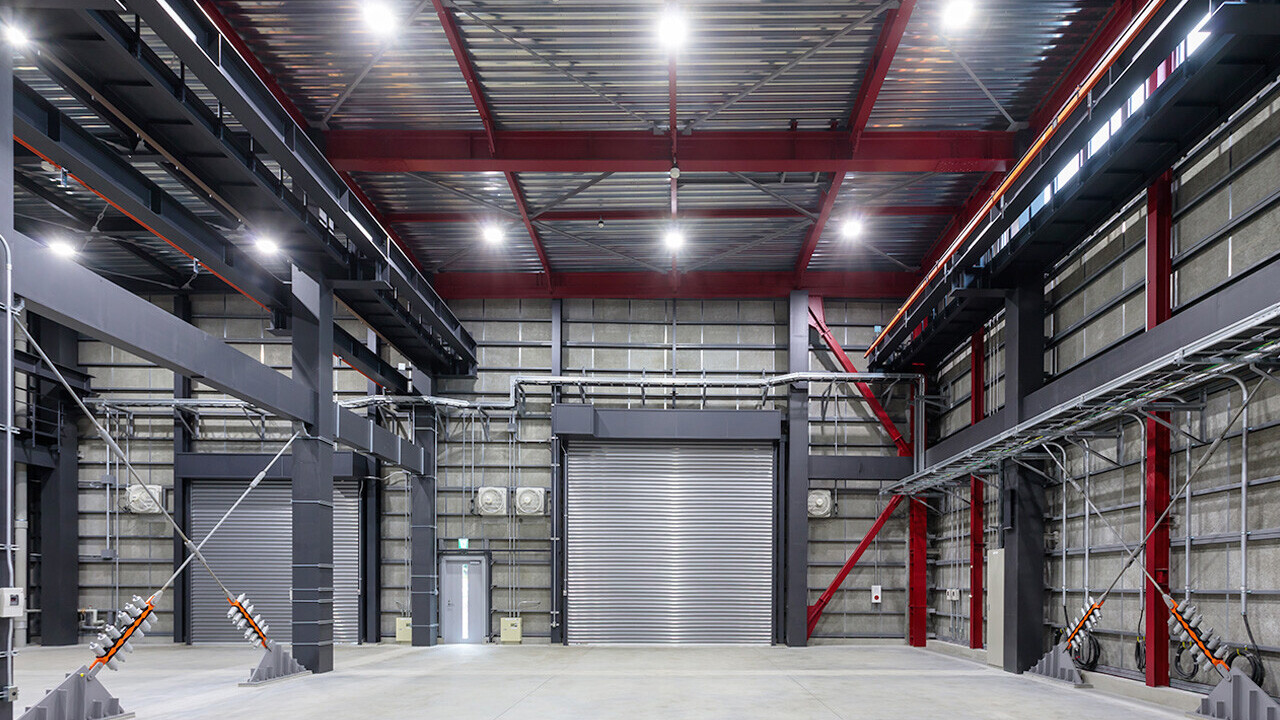
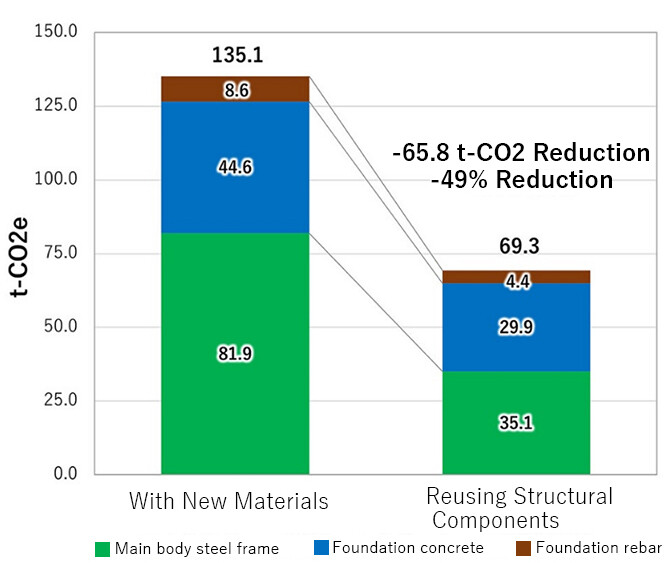
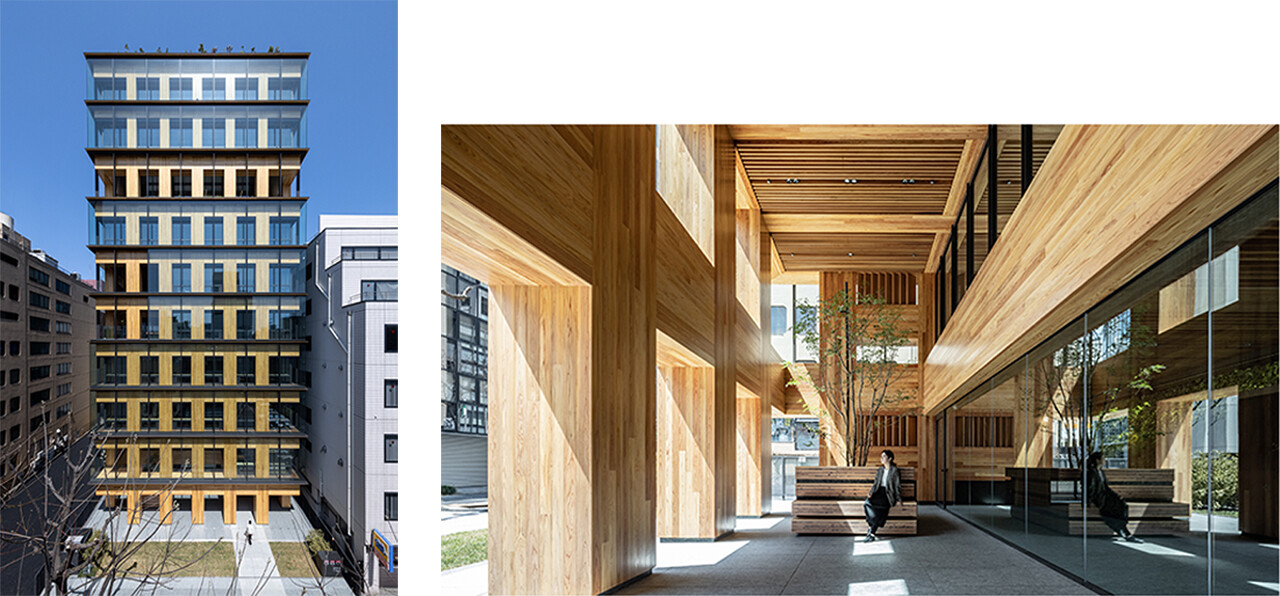
Using Internal Carbon Pricing (ICP)
- To promote the use of low carbon materials such as Clean-Crete, electric furnace iron frame, as well as wooden buildings, we have introduced internal carbon pricing (ICP). We use ICP to stimulate investment in the research and development of low-carbon materials. ICP unit price is set at 10,000yen/t-CO2 considering market unit price forecast by an external organization and with reference to the unit price reflecting the CO2 reduction effect of low-carbon materials. However, it will be revised accordingly in line with changes in market unit prices. We will use ICP to visualize reduction effects, evaluate actual performance at construction sites, and promote the use of low-carbon materials during the planning stage.
Scope3 Reduction Measures (Category11 Use of sold products)
Promote and Expand ZEB/ZEH-M
- We are also working to reduce the CO2 emitted during the operation of the buildings we deliver to our customers in addition to reducing the CO2 emitted from our business activities. Carbon Design Tool "E-CO BUILDER™" enables comparison of CO2 reduction benefits and cost increases or decreases at the early planning stage of building projects. Through the development of such tools, we propose the optimal ZEB/ZEH-M(*8) to our customers with the latest energy-saving technologies and expertise according to the purposes and characteristics of the building.
- *8 ZEB/ZEH-M (Net Zero Energy Building/House-Mansion)
A building or a house that consumes zero net primary energy while still providing a comfortable indoor environment
ZEB Targes
| Targets | |
|---|---|
| The ratio of ZEB projects among design and consulting services contracted by Obayashi (*9) | 50% or more (FY2025) |
| Ratio of ZEB proposals (design and build projects)(*10) | 7 (FY2025)(*11) |
- *9 Goals as a ZEB Planner
- *10 ZEB certifications and ZEH-M certifications
- *11 ESG Data Book(ZEB certification in Designed & Constructed Buildings (Non-consolidated)
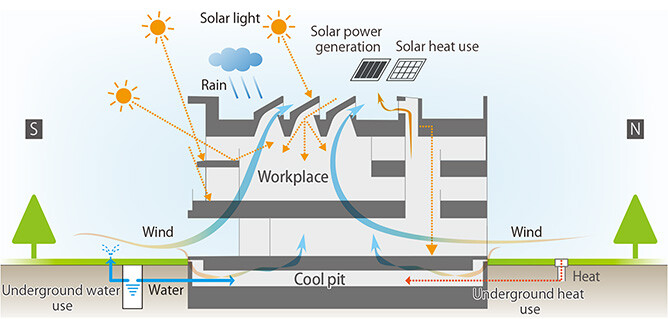
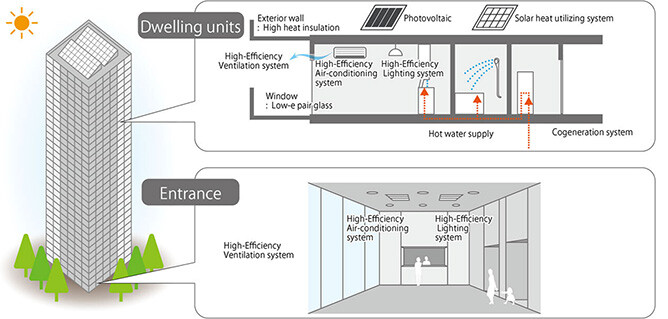

TCFD Disclosure
In July 2020 we declared our support for the Task Force on Climate-related Financial Disclosures (TCFD). We conducted scenario analysis to identify and assess climate-related risks and opportunities and understand the medium- to long-term impacts that climate problems may have on our business, and then in November 2020, in light of our analysis results, we disclosed climate-related information based on the TCFD recommendations. We updated our disclosures in April 2024 in response to needs in society, including the issuance of "IFRS Sustainability Disclosure Standards" developed by the International Sustainability Standards Board (ISSB).
Promote Technological Development That Contributes to Decarbonization
We will collaborate with those in other industries to promote technological development that contributes to carbon neutrality including the use of hydrogen in addition to the development of new energy-saving construction methods and low-fuel consumption and electric construction machinery technology.
- Energy-efficient Construction ZEB (Available only in Japanese)
- OBAYASHI WOOD VISION (Available only in Japanese)
- Port Plus (Available only in Japanese)
- LOOP50 (Available only in Japanese)
- Started introducing GX construction machinery in construction projects (April 25,2024)


